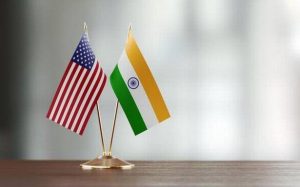Today Current Affairs: 14th September 2021 for UPSC IAS exams, State PSC exams, SSC CGL, State SSC, RRB, Railways, Banking Exam & IBPS, etc
Table of Contents
US-India Strategic Clean Energy Partnership (SCEP):

The revamped US-India Strategic Clean Energy Partnership SCEP was launched during the ministerial meeting of the Petroleum and Natural Gas Ministry with the US Ministry of Energy.
- The SCEP was launched in accordance with the US – India Climate and Clean Energy Agenda 2030 Partnership announced by both countries at the Leaders’ Summit on Climate held earlier this year (2021).
US-India Agenda 2030 Partnership:
- The aim is to create stronger bilateral cooperation on actions in the current decade to meet the goals of the Paris Agreement.
- The Partnership will proceed along two main tracks: the Strategic Clean Energy Partnership and the Climate Action and Finance Mobilization Dialogue.
- India elevated the India-US energy dialogue to a strategic energy partnership in 2018.
Revamped Strategic Clean Energy Partnership (SCEP):
- Addition of a fifth Pillar on Emerging Fuels (cleaner energy fuels).
- With this, the SCEP inter-governmental engagement now spreads across five pillars of cooperation – Power and Energy Efficiency, Responsible Oil and Gas, Renewable Energy, Sustainable Growth and Emerging Fuels.
- Support India in achieving its goal of installing 450GW of renewable energy capacity by 2030.
- A new India-U.S. Task Force on Biofuels was also announced.
Swachh Survekshan Grameen 2021:

The Jal Shakti Ministry launched Swachh Survekshan Grameen 2021 or rural cleanliness survey 2021 under Swachh Bharat Mission (Grameen) Phase-II.
- Before this, the Swachh Survekshan Grameen had been carried out by the Ministry in 2018 and 2019.
- The Swachh Survekshan Urban 2021 is to be announced. It was introduced by the Ministry of Housing and Urban Affairs (MoHUA) in 2016.
Swachh Survekshan Grameen 2021:
- Assesses the state of hygiene, cleanliness and sanitation in rural India as a part of the Centre’s initiative to award Open Defecation Free (ODF) Plus status to villages.
- ODF-plus status aims to ensure management of solid as well as liquid waste and is an upgradation of ODF status in which construction of adequate toilets was required so that people did not have to defecate in the open.
- It is carried out by an expert agency.
- Coverage: As part of the 2021 rural cleanliness survey, as many as 17,475 villages spanning across 698 districts would be covered.
- Weightage to Different Elements:
- Direct Observation of sanitation at public places -30%
- Citizen’s Feedback -35%
- Service Level Progress on sanitation related parameters -35%
Swachh Bharat Mission (Grameen) Phase-II:
- It emphasizes the sustainability of achievements under phase I and to provide adequate facilities for Solid/Liquid & plastic Waste Management (SLWM) in rural India.
- It will be implemented from 2020-21 to 2024-25 in a mission mode with a total outlay of Rs. 1,40,881 crores.
The fund sharing pattern between Centre and States will be 90:10 for North-Eastern States and Himalayan States and UT of J&K; 60:40 for other States; and 100% for other Union Territories. - Funding Norms for SLWM have been rationalized and changed to per capita basis in place of the number of households
Battle Of Saragarhi:

12th September marked the 124th anniversary of the Battle of Saragarhi.
- The Battle of Saragarhi is considered one of the finest last stands in the military history of the world.
- Saragarhi was the communication tower between Fort Lockhart and Fort Gulistan. The two forts in the rugged North West Frontier Province (NWFP), now in Pakistan, were built by Maharaja Ranjit Singh but renamed by the British.
- Saragarhi helped to link up the two important forts which housed a large number of British troops in the rugged terrain of NWFP.
- Twenty-one soldiers were pitted against over 8,000 Afridi and Orakzai tribals but they managed to hold the fort for seven hours.
- Though Saragarhi was usually manned by a platoon of 40 soldiers, on that fateful day, it was being held by only 21 soldiers from 36th Sikh Regiment (now 4th Sikh in Indian Army) and a non-combatant called Daad, a Pashtun who did odd jobs for the troops.
- Though heavily outnumbered, the soldiers of 36th Sikhs, led by Havildar Ishar Singh, fought till their last breath, killing 200 tribals and injuring 600.
- In 2017, the Punjab government decided to observe Saragarhi Day on 12th September as a holiday.
- Even today the Khyber Scouts regiment of the Pakistani army mounts a guard and salutes the Saragarhi memorial close to Fort Lockhart.
128th Anniversary Of Chicago Address Of Swami Vivekananda:

On September 11, 1893, Swami Vivekananda delivered his famed speech at the ‘Parliament of the World’s Religions’, garnering a full two minute standing ovation and the moniker of ‘cyclonic monk of India’ .
- This year marked the 128th anniversary of the historic Chicago Address of Swami Vivekananda.
- The Chicago address had dwelt at length on Hinduism and Indian culture, and his words continue to remain resonant till date.
- He became popular in the western world after his famous speech at the World’s Parliament of Religions.
- He was considered a major force in the revival of Hinduism in India and bringing it to the status of major world religion in the late 19th century.
- His address in the World “Parliament of Religions” at Chicago in 1893 drew the world’s attention to the ancient Indian philosophy of Vedanta.
About Swami Vivekananda:
- He was a true luminary, credited with enlightening the western world about Hinduism.
- He was an ardent disciple of Sri Ramakrishna Paramahansa and a major force in the revival of Hinduism in India.
- He pushed for national integration in colonial India, and his famous speech remains as the one that he gave in Chicago in 1893 (Parliament of the World Religions).
- In 1984 the Government of India declared that 12 January, the birthday of Swami Vivekananda, will be celebrated as National Youth Day.
- Born in Kolkata on January 12, 1863 in Kolkata, Swami Vivekananda was known as Narendra Nath Datta in his pre-monastic life.
- He is known to have introduced the Hindu philosophies of Yoga and Vedanta to the West.
- Netaji Subhas Chandra Bose had called Vivekananda the “maker of modern India.”
- In 1893, he took the name ‘Vivekananda’ after Maharaja Ajit Singh of the Khetri State requested him to do so.
- He formed the Ramakrishna Mission in 1897 “to set in motion a machinery which will bring noblest ideas to the doorstep of even the poorest and the meanest.”
- In 1899, he established the Belur Math, which became his permanent abode.
- He preached ‘neo-Vedanta’, an interpretation of Hinduism through a Western lens, and believed in combining spirituality with material progress.
- Books written by him: ‘Raja Yoga’, ‘Jnana Yoga’, ‘Karma Yoga’ are some of the books he wrote.
Subramaniya Bharathiyar:

Vice-President recently paid homage to Subramania Bharati to mark the death centenary of the poet and freedom fighter.
About Subramaniya Bharathi:
- Born on 11th December 1882, in Ettayapuram village of Tirunelveli District in Tamil Nadu.
- He was a poet, freedom fighter and social reformer from Tamil Nadu.
- He was known as Mahakavi Bharathiyar.
- His songs on nationalism and freedom of India helped to rally the masses to support the Indian Independence Movement in Tamil Nadu.
- Literary works: “Kannan Pattu” “Nilavum Vanminum Katrum” “Panchali Sabatam” “Kuyil Pattu”.
- He published the sensational “Sudesa Geethangal” in 1908.
- Sometime in mid-1908, Bharati began to serialise Gnanaratham in his political weekly, India.
- In 1949, he became the first poet whose works were nationalised by the state government.
- He was against caste system. He declared that there were only two castes-men and women and nothing more than that. Above all, he himself had removed his sacred thread.
- He condemned certain Shastras that denigrated women. He believed in the equality of humankind and criticised many preachers for mixing their personal prejudices while teaching the Gita and the Vedas.
CRISPR-Based System To Safely Restrain Mosquito Vectors Via Sterilization:
Researchers from California have developed CRISPR-based system to safely restrain mosquito vectors via sterilization. It is called the new precision-guided sterile insect technique, or pgSIT.
- pgSIT is a new scalable genetic control system that uses a CRISPR-based approach to engineer deployable mosquitoes that can suppress populations.
- It alters genes linked to male fertility — creating sterile offspring — and female flight in Aedes aegypti, the mosquito species responsible for spreading wide-ranging diseases including dengue fever, chikungunya, and Zika.
- pgSIT uses CRISPR to sterilize male mosquitoes and render female mosquitoes, which spread disease, as flightless.
- pgSIT eggs can be shipped to a location threatened by mosquito-borne disease or developed at an on-site facility that could produce the eggs for nearby deployment. Once the pgSIT eggs are released in the wild, sterile pgSIT males will emerge and eventually mate with females, driving down the wild population as needed.
- CRISPR technology is basically a gene-editing technology that can be used for the purpose of altering genetic expression or changing the genome of an organism.
- The technology can be used for targeting specific stretches of an entire genetic code or editing the DNA at particular locations.
- CRISPR technology is a simple yet powerful tool for editing genomes. It allows researchers to easily alter DNA sequences and modify gene function.
- Its many potential applications include correcting genetic defects, treating and preventing the spread of diseases and improving crops.
- However, its promise also raises ethical concerns.
- The technology behaves like a cut-and-paste mechanism on DNA strands that contain genetic information.
- The specific location of the genetic codes that need to be changed, or “edited”, is identified on the DNA strand, and then, using the Cas9 protein, which acts like a pair of scissors, that location is cut off from the strand. A DNA strand, when broken, has a natural tendency to repair itself.
- Scientists intervene during this auto-repair process, supplying the desired sequence of genetic codes that binds itself with the broken DNA strand.
What Is NATGRID?:

Prime Minister Narendra Modi is soon expected to launch the National Intelligence Grid or NATGRID that aims to provide a “cutting-edge technology to enhance India’s counter-terror capabilities”.
- Envisaged as a robust mechanism to track suspects, the NATGRID can help in preventing terrorist attacks with real-time data and access to classified information like immigration, banking, individual taxpayers, air and train travels.
- In 2010, the Cabinet Committee on Security (CCS) had given approval to the Rs 3,400-crore NATGRID project
- It will be a medium for at least 10 Central agencies such as the Intelligence Bureau (IB) and the Research and Analysis Wing (R&AW) to access data on a secured platform.
- The data will be procured by NATGRID from 21 providing organisations such as the telecom, tax records, bank, immigration etc.
Subansiri Hydroelectric Project (LSHP):

Subansiri Lower Hydroelectric Project (SLHEP), is an under-construction gravity dam on the Subansiri river along the border of Assam and Arunachal Pradesh.
- Subansiri River (gold river), originates in the Tibet Plateau and enters India through Miri hills in Arunachal Pradesh.
- It is the largest tributary of Brahmaputra River.
- The project is being developed by the state-run National Hydro Power Corporation (NHPC).
- It will be the single largest hydroelectric plant in India when completed. The project is expected to be completed in 2023.
Controversy :
- Resistance to the ongoing hydroelectric project was shown in the form of a far-reaching anti-dam movement.
- It is alleged that the dam is located in a seismic zone and it is significantly under-designed to resist earthquakes.
- The fluctuation of water level in the river is also feared to affect the ecology in the lower Subansiri region in future.




